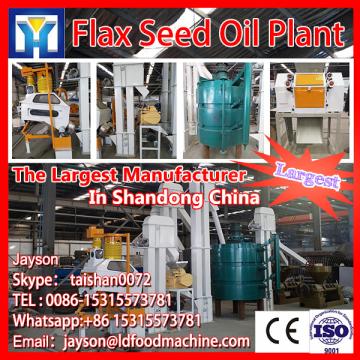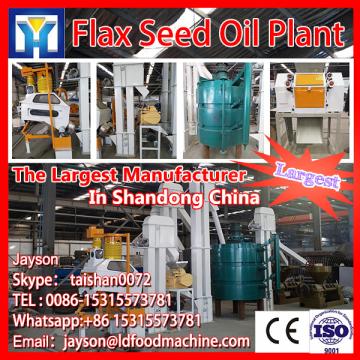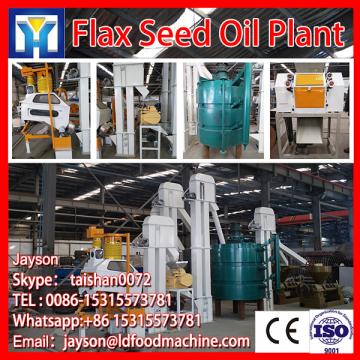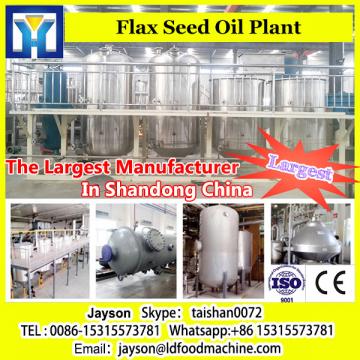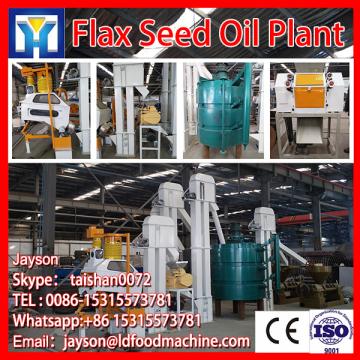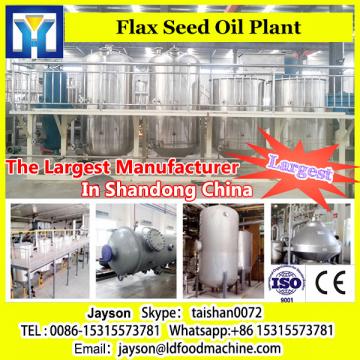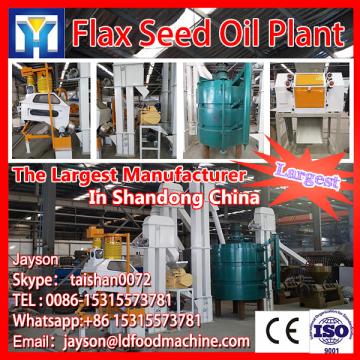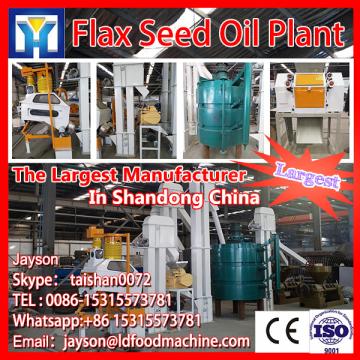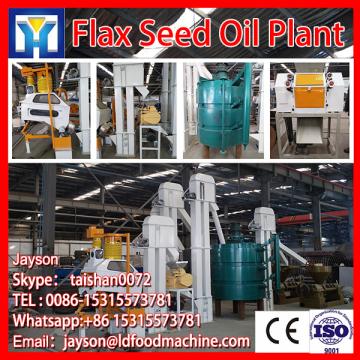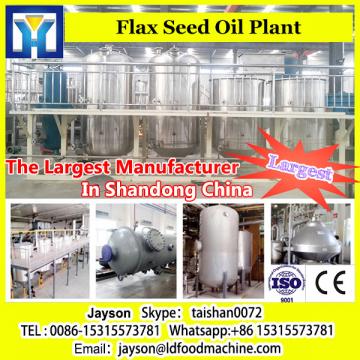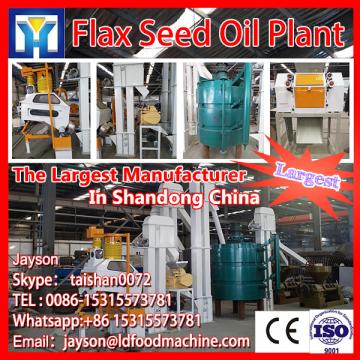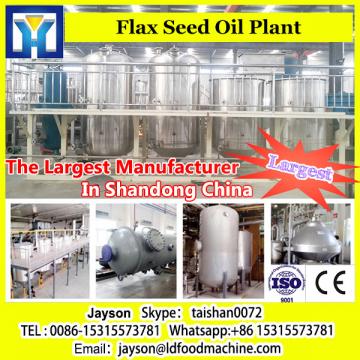
- Small Oil Pressing Machine - Leader Machinery
- Industrial automatic continuous fryer Soybean Oil Plant
- Address3rd Road, High-tech Zone, Jinan City, Shandong Province
- Factory Address3rd Road, High-tech Zone, Jinan City, Shandong Province
- Worktime9:00--18:00
- Phone(Working Time)086-0531-885125
- Phone(Nonworking Time)086-0531-881256
- Fax086-0531-885125
Flax Seed Oil Plant
Contact NowThe content of omega 3 contained in Flax seed oil is 33%-53%, which is much higher than that of ordinary cold pressed oil. It is a veritable plant “liquid gold”.
Both EPA and DHA are important intermediate metabolites in the metabolism of α-linolenic acid, and play a very important physiological role in human life activities.
There is a misunderstanding that supplementing DHA is better than supplementing α-linolenic acid. In fact, this is not true. This is mainly due to the lack of awareness of α-linolenic acid.
After α-linolenic acid enters the human body, EPA and DHA are sequentially formed under the action of enzymes. This process is irreversible, that is to say, α-linolenic acid has more potent functions than DHA, and the effect is more comprehensive. Moreover, when α-linolenic acid enters the human body, the human body can rationally carry out metabolism according to its own needs. As long as the amount of α-linolenic acid is sufficient, how much DHA can be supplemented by the body, and the excess α-linolenic acid is also It can be metabolized into other substances such as EPA to complete other physiological functions. DHA does not have such characteristics, and supplementing excessive DHA will have negative effects, such as low immunity.
Pressing method
The pressing method, also known as the "physical pressing method", uses an external force to squeeze out the oil in the Flax seed. It does not apply to other chemical solvents, etc., and avoids the residual organic solvent in the oil.
The pressing production process retains the most effective ingredients in flaxseed - polyunsaturated fatty acids and various nutrients beneficial to the human body such as protein, dietary fiber, vitamins and trace elements, and is more suitable for special supplementation for human body. health care.
The pressing method is further divided into "cold pressing method" and "hot pressing method"
Hot pressing method: refers to the oil that has been physically pressed after the oil crop has been fired or steamed. It is a relatively traditional pressing process with a high oil yield.
Cold pressing method refers to the Flax seed oil which is extracted by the huge pressure of physical machinery under low temperature conditions. Therefore, it is called cold pressing method. It has not undergone the traditional high-temperature frying or steaming process, so the oil is still distributed in the undeformed Protein cells contain a very rich component of flaxseed (a variety of nutrients such as linolenic acid).
1. Flax seed material screening
After cleaning, the amount of impurities should not exceed 0.5%.
2. Flax seed roast
After hot frying, the oil can not be burnt, and the temperature and moisture of the press pot are appropriately controlled according to different oil materials.
3. Flax seeds into the squeeze
After normal operation, the material must be kept evenly and not too much. Control the thickness of the cake, and press the temperature and moisture. During normal operation, the oil content of the oil with high oil content is mostly concentrated in the front pressure zone, the oil color is very clear, the cake is solid in arc shape, and the cake surface is free of oil stains. The stock of freshly squeezed cake should not be too high. Add water to make the cake water to about 8% to prevent spontaneous combustion.
4. Flaxseed oil filtration
The filter cloth device is flat and cannot be folded. The pressure required for the filter is not more than 3.5 kg / cm 2 , the oil is filtered out and the oil color is clear.
5. Flax seed hydration degumming
The filtered oil is heated into the hydration tank and then hydrated when the oil temperature reaches 60-75 °C. At a stirring speed of 60 rpm, add 2-3% oil to the same temperature and stir the water for about 30 minutes. When the phospholipid particles are separated from the oil, the stirring speed is 30 rpm. The phospholipids are agglomerated. When the separation is obvious, the stirring is stopped, and at this time, the oil temperature is raised to 80-90 ° C, and the precipitation is carried out for the next eight hours or more. Linseed oil
(1) Washing
If the oil is only dehydrated by hydration, move the lower layer of oil to the soap pot, add the clean oil to 70 ° C, add the soft water of the same oil temperature at a stirring speed of 30 rpm, and add 8 %, wash away the soap particles remaining in the clean oil and let stand for 2 hours.
(2) Dehydration
After releasing the washing wastewater, the oil is heated at 95-100 ° C, the vacuum is not less than 700 mm Hg, and the mixture is stirred at a stirring speed of 40 rpm, and the residual moisture in the oil is removed until the sample is tested in a test tube at 20 ° C or lower. It is transparent and has no stratification. It is cooled to room temperature for filtration.
Flaxseed leaching
The oil produced by the leaching process is also called leaching oil, that is, the oil is leached with an organic solvent (such as gasoline, ethanol, etc.), and the leaching method is to use solvent oil (No. 6 light gasoline) to soak the oil raw materials after high temperature extraction. An oil-making process that allows oil to be extracted. The "oil" originally immersed in is a mixture of organic solvents and oils and fats. It cannot be eaten and must be subjected to a series of refining processes (dewaxing, degumming, dehydration, deodorization, deacidification, decolorization, etc.) before it can be eaten. The oil is generally light in color and the initial natural gas in the material seed is light or has no visible odor. The leaching process can extract all the oil in the oil, and the economic benefit is very high. It is the most popular processing method in the modern oil industry.
Flax seed process comparison
(1) Flax seed cold pressing method
Preparation process of cold pressed oil
Flaxseed harvesting, screening→linseed→cleaning impurities→hulling→crushing→low temperature pressing→pressing flaxseed oil→coarse filtration→fine filtration→low temperature crystallization crystal→low temperature filtration→cold pressed linseed oil
Cold pressing process features:
1. Avoid harmful substances caused by degradation of oils and sugars in high-temperature presses and denaturation of proteins.
2, avoiding the high temperature and the linseed oil color becomes darker and there is a paste phenomenon.
3. After multiple filtration, the direct contact and secondary pollution of chemical substances caused by sulfuric acid degumming, caustic deacidification and activated white earth decolorization process in the hot pressing process are avoided.
4. Avoid high-temperature distillation and deodorization, effectively prevent the destruction of polyunsaturated fatty acid-α-linolenic acid in linseed oil at high temperature, effectively retain the natural complete nutrients, and make it easier for human body absorption and nutritional supplement.
Advantages: It retains almost all the nutrients in flaxseed, and its taste is refreshing and non-greasy, and it is rich in polyunsaturated fatty acids.
Disadvantages: Flax seed has lower oil yield and relatively higher cost
(2) Flaxseed hot pressing method
Hot pressing oil preparation process
Flaxseed harvesting, screening→linseed→cleaning impurities→hulling→crushing→frying→pressing flaxseed oil→coarse filtration→fine filtration→degumming→water washing→dehydration→decolorization→deodorization→hot pressed linseed oil
Hot pressing process characteristics
1, can improve the oil yield, improve the taste of the oil, the fragrance is more intense.
2, easy to cause high temperature oxidative polymerization, decomposition of peroxides and some harmful substances, destroying the nutrients in the oil.
3, high temperature causes protein denaturation, greatly reducing the content of polyunsaturated fatty acids in linseed oil, and even produce trans fatty acids.
4, more impurities, such as flax seed dandruff, phospholipids, free fatty acids, etc., affecting the appearance of oil and the inherent quality of oil.
Advantages: Flaxseed oil has a rich and mellow taste and a high oil yield.
Disadvantages: High temperature frying seeds will reduce the content of active ingredients in the oil, leading to protein denaturation.
(3) Leaching method
Advantages: Very high oil yield, low cost and higher economic efficiency. The most popular processing method in the modern oil industry.
Disadvantages: Destroy almost all nutrients and trace traces of organic solvents.
(4) Temperature analysis
The key influence of temperature on edible oil: fragrant and in its taste, for the ancient times, today, more important is the nutritional value.
When the temperature of the edible oil is more than 80° during the heating process, the nutrients of the edible oil begin to be destroyed. After the cooking is finished, the fragrance will be pleasant, and the nutrition will start to be distributed. Usually, the cooking oil temperature is suitable for 70-80 degrees, and the fried foods can reach the oil temperature of up to 150 degrees. When the oil temperature is high, it will be accompanied by the formation or decomposition of other substances.
When the oil temperature is above 250 °C, the substances in the oil will undergo oxidation, hydrolysis, polymerization, cracking, etc., and will evaporate with the boiling oil.
Flaxseed oil has a boiling point of 287 ° C. When the oil temperature is too high or too high (287 degrees or more) for a long time, it will turn black. Oxidative decomposition, and even cancer;
The cooking oil also contains a variety of mutagenic substances. Vegetable oil and soybean oil contain more unsaturated fatty acids and are mutagenic; (the content of lard is small but the disadvantages are too much)
Recommendation 1: The temperature of linseed oil cooking is best controlled below 80 °.
Recommendation 2: The cooking oil will produce less pollutants below 180 °C. Careful consideration in frying
Flax seed nutrition
The sum of crude protein, fat and total sugar content in flaxseed is as high as 84.07%. The flaxseed protein has a complete range of amino acids, and the essential amino acid content is as high as 5.16%, which is a plant protein with high nutritional value. The content of α-linolenic acid in linseed oil is 53%. α-linolenic acid is an essential fatty acid in human body and can be converted into eicosapentaenoic acid and docosahexaenoic acid in human body [4]. They are in fish oil. Effective active ingredient. Alpha-linolenic acid has anti-tumor, anti-thrombosis, hypolipidemic, nutritional brain cells, regulation of autonomic nerves [5], and has received more attention. , anti-virus, anti-thrombotic, hypolipidemic effect.
Flaxseed oil also contains VE, a strong and effective free radical scavenger that delays aging and antioxidants. Flax seeds contain 23 mg/100 g of flavonoids. Flavonoids have a good effect on lowering blood fat and resisting atherosclerosis [7]. Flaxseed oil has a high content of unsaturated fatty acids and a high iodine value. It must be added with an antioxidant or a nitrogen-filled seal. The unsaponifiables of linseed oil is 8.26%, indicating that there are also a considerable amount of higher fatty alcohols, sterols and hydroxyls in linseed oil. Flaxseed is rich in minerals. The highest potassium content is much higher than the high potassium food oranges, peanut kernels and shrimps.
Through research and clinical experiments, it has been confirmed that linseed oil has the following functions:
1. Skin is delicate and shiny
Improves skin's fat content, leaving skin smoother, moisturized, softer and more elastic, while allowing skin to breathe and sweat properly, alleviating various skin problems.
2. Lose weight
Flax seed oil is a healthy weight loss method that consumes excess body fat.
3.Flax seed oil improves women's premenstrual syndrome
There are many examples of premenstrual syndrome in women, such as dysmenorrhea, and the symptoms disappear completely after eating fresh linseed oil every day. Of course, vitamins and minerals are needed.
4. Improve resistance to stress
Omega 3 reduces the effects of harmful biochemicals produced by stress on the body, stabilizes mood, maintains a calm mind, and reduces depression and insomnia.
5.Flax seed oil alleviates allergic reactions
Omega 3 can help alleviate allergic reactions, but because the whole body has to be reorganized, it takes a long time to completely eliminate allergies, and more comprehensive nutritional support.
6.Flax seed oil relieves asthma
It can significantly reduce asthma attacks after eating for a few days.
7.Flax seed oil improves arthritis
Experiments have shown that Omega 3 has a great effect on the treatment and prevention of arthritis. 60% of patients with rheumatoid arthritis can stop using non-steroidal anti-inflammatory drugs after receiving omega 3 and 6 fatty acids, while another 20% can halve non-steroidal anti-inflammatory drugs.
8. Improve inflammation of organ tissues
Omega 3 is very helpful in preventing inflammation of organ tissues, including meningitis, tendinitis, tonsillitis, gastritis, ileitis, colitis, arteritis, phlebitis, mastitis, nephritis, spleen, Hepatitis, pancreatitis, otitis, etc., as well as sputum and sores.
9.Flax seed oil lowers cholesterol
Omega 3 reduces blood cholesterol by 25% and triglyceride by 65%, and converts excess low-density cholesterol (LDL) into bile acid for excretion.
10.Flax seed oil reduces heart load
It can reduce high blood pressure, reduce blood lipid levels, increase the level of unsaturated fatty acids, improve blood concentration, reduce blood viscosity, maintain blood flow, prevent vascular obstruction and related diseases. In addition, it can prevent blood from clotting, prevent stroke (cardio-cerebral artery occlusion), heart disease (heart artery blockage), pulmonary embolism (pulmonary artery blockage), and vascular surface disorders (ie, acne).
11.Flax seed oil improves water retention
Help the kidneys to remove sodium and water. Hydrosis usually occurs in swollen ankles, overweight in certain situations, premenstrual syndrome, late cancer, and cardiovascular disease.
12. Improve kidney function
Omega 3 adjusts prostaglandin (Prostaglandin) to promote the secretion of liver, pancreas and spleen, so that the body's metabolism is working properly.
13.Flax seed oil improves constipation
Improve intestinal function, increase absorption capacity, increase intestinal peristalsis ability to make bowel movements normal, reduce constipation.
14.Flax seed oil promotes cell health
Improve the moisture and elasticity of the cell membrane, increase the function of cell respiration and nutrient exchange, and strengthen the ability of body cells to repair and heal, make the cells healthy and reduce the chance of cancer.
Effect of Flax seed oil on maternal
Cold-pressed linseed oil is rich in omega-3. Omega-3 is a "essentially unsaturated fatty acid". It is extremely important to the human body, but it cannot be synthesized by itself. It must be ingested in vitro to meet the important substances needed by the human body. Omega-3 is abundant in marine animals, plants, flax plants and walnut nuts such as seals, deep-sea cold-water fish and seaweed. Among them, linseed oil is the highest omega-3 vegetable oil on land, and is called “liquid gold” because of its importance to the body. Eating walnuts can make up the brain, precisely because the walnut is rich in omega-3 and its metabolites. Relying on eating walnuts to supplement omega-3 is far less than the amount of omega-3 required by the experts.
The World Health Organization recommends that 1300 mg should be added to the maternal day. Adding 1300 mg Ω-3 is equivalent to eating 17 kg of walnuts every day! Flaxseed oil only needs 20 ml per day to replenish a sufficient amount of omega-3!
The main ingredients in fish oil are DHA and EPA, which also play a role in brain and eyesight, but the difference is that omega-3 in linseed oil is the most suitable amount of DHA and EPA in our body to meet the body's needs. Need, a single supplement of fish oil is not balanced by the omega-3. In addition, fish oil also contains a lot of cholesterol that is harmful to our body.
